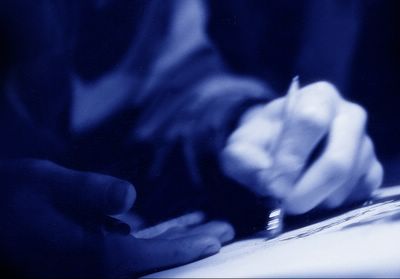TIFF 2007 Review: "Mother Of Tears"
 (Midnight Madness)
(Midnight Madness)
(Italy/USA, 2007)
Written by Jace Anderson, Dario Argento, Adam Gierasch
Directed by Dario Argento
Cast: Asia Argento, Daria Nicolodi, Moran Atias, Adam James, Coralina Cataldi-Tassoni, Udo Kier
Midnight Madness 2007's inaugural screening of Dario Argento's Mother Of Tears was such a festive affair--from programmer Colin Geddes' introductory reminiscences of being a fan in the lineup for the second-year screening of Opera, to heartfelt greetings from the clearly-moved veteran horror filmmaker himself amidst playful jabs from his daughter/leading lady Asia, climaxing with an audience sing-a-long of "Happy Birthday" as midnight struck and Argento turned 67!--that it almost didn’t matter if the long-awaited conclusion to the "Three Mothers Trilogy" was any good or not--we were so pumped that we were game to go for it hook, line, and mad monkey.
At a construction site in Rome, an ancient urn is unearthed. Despite protests from the church, it’s sent to the museum for analysis. When student Sarah Mandy (Argento) and her coworker Giselle (Cataldio-Tassoni) defy protocol and open the urn, they unleash the evil entities that have been entombed for centuries and immediately manifest themselves in a wave of random murders and suicides across the city. Initially a skeptic, Giselle’s ritual murder convinces Sarah that demonic forces are definitely real, which in turn convinces the local detective that she’s insane. When the coven kidnaps the son of her instructor/lover Michael (James), Sarah discovers that she possesses paranormal abilities, such as the ability to see the dead, and is coached by her mother’s spirit (Nicolodi) from beyond the grave as the legion of witches converge on the city to prepare for the resurrection of Mater Lacrimarum--the “'Mother of Tears”--to conquer the world.
Asia, a popular European star outside of her father's works, functions in ingénue mode here (as opposed to her wild child tabloid persona she brought to the screen in her own directorial efforts Scarlet Diva and The Heart Is Deceitful Above All Things) and manages to forge some real emotion from an underwritten role which requires her to do little more than flee skanky witchy-poos (most of whom look like they missed the casting call for Mark Lester’s Class Of 1984), furrow her pale, pretty brow at the endless exposition she must elicit from various holy men and paranormalists, and pout sorrowfully at her mother's ectoplasmic visitations. Much time is spent setting up Sarah’s latent paranormal abilities, none of which she ever uses in the hasty climax (a familiar Dario Argento handicap that by now, I’m willing to overlook). The rest of the performances are all over the place in tone, from Udo Kier's panicked padre to several horribly post-dubbed extras, and, true to another Argento signature, Adam James as the blandest leading man since Leigh McCloskey.
References are made to the previous films—dancer Suzy Bannion from Suspiria, architect Varelli’s New York apartment in Inferno--but it's unclear what the frequently undressed Mater Lachrymarum wants, other than to host a big orgy that's like if Jesse Franco had adapted Traumnovelle instead of Kubrick. Her resurrection ignites outbreaks of violence, infanticide, and self-mutilation across Italy’s capital, but the gags are shot too tight and are too fleeting, and serve mostly bridge the marathon of conversations in various studies and libraries that make up the bulk of the exposition-overloaded second act. Argento fails to convey a sense of impending apocalypse--there's nothing close to the collapsing social order of George Romero's zombie films or the Headline News hysteria of 28 Days/Weeks Later or the Dawn Of The Dead remake.
The coven’s monkey "familiar" is a nice macabre touch, allowing Argento another nod to Poe ala the heroic chimp in Phenomena. Nevertheless, I couldn't help but join in the applause when the shrieking simian got flattened by falling concrete during the film's fiery climax. Asia seems genuinely frightened of the diminutive menace throughout--confirmed by Argento's Q &A anecdote that the monkey was unpredictable and actually bit her on the leg.
I tend to prefer Argento’s giallo thrillers--"broken mirrors" of "broken minds" to steal from Maitland McDonagh’s essential study--in which the byzantine plots tunneled so deeply into their antagonists' warped world views that their illogical turns made a certain amount of twisted, subjective sense. Argento's supernatural plots are wonky and random, built more around set pieces than plot.
There no comparable set pieces here—and my major disappointment is that Mother Of Tears isn't terribly awe-inspiring, visually. Argento remains one of the horror supreme stylists--closer to Bunuel or Jodorowsky than say, Craven or Romero. While the film is well-paced and features some outrageously gruesome murders from longtime FX collaborator Sergio Stivalleti (with CG and practicals from Lee Wilson, who has worked with Argento on his two Masters Of Horror entries), there isn't that one great scene to rank with the room of barbed wire or the Mater Tenebrarum’s underwater chamber in the previous chapters.
Despite the fact that he waited 27 years to follow up the saga that began with 1977s Suspiria and stalled after 1980s Inferno (although, in his intro, Argento admitted he thought it would only take 20), Mother Of Tears is frustratingly devoid of any real purpose, other than to say, "hey, I'm back and I can still do this", which, as the excruciatingly gruesome mutilation/murder of Cassoni's museum worker confirms only minutes into act one, certainly proves he can. Mother Of Tears smacks of the Michele Soavi films he's produced (The Church, The Sect) than to those early chapters that remain amongst his finest visual achievements. While it's a busy movie, it lacks any urgency to complete the tale, but taken as a "greatest hits" of sorts--ala DePalma's remote retreads Raising Cain and Femme Fatale--there's a good time to be had, but I wished it hinged more on self reflection than-self parody.
©Robert J. Lewis 2007



